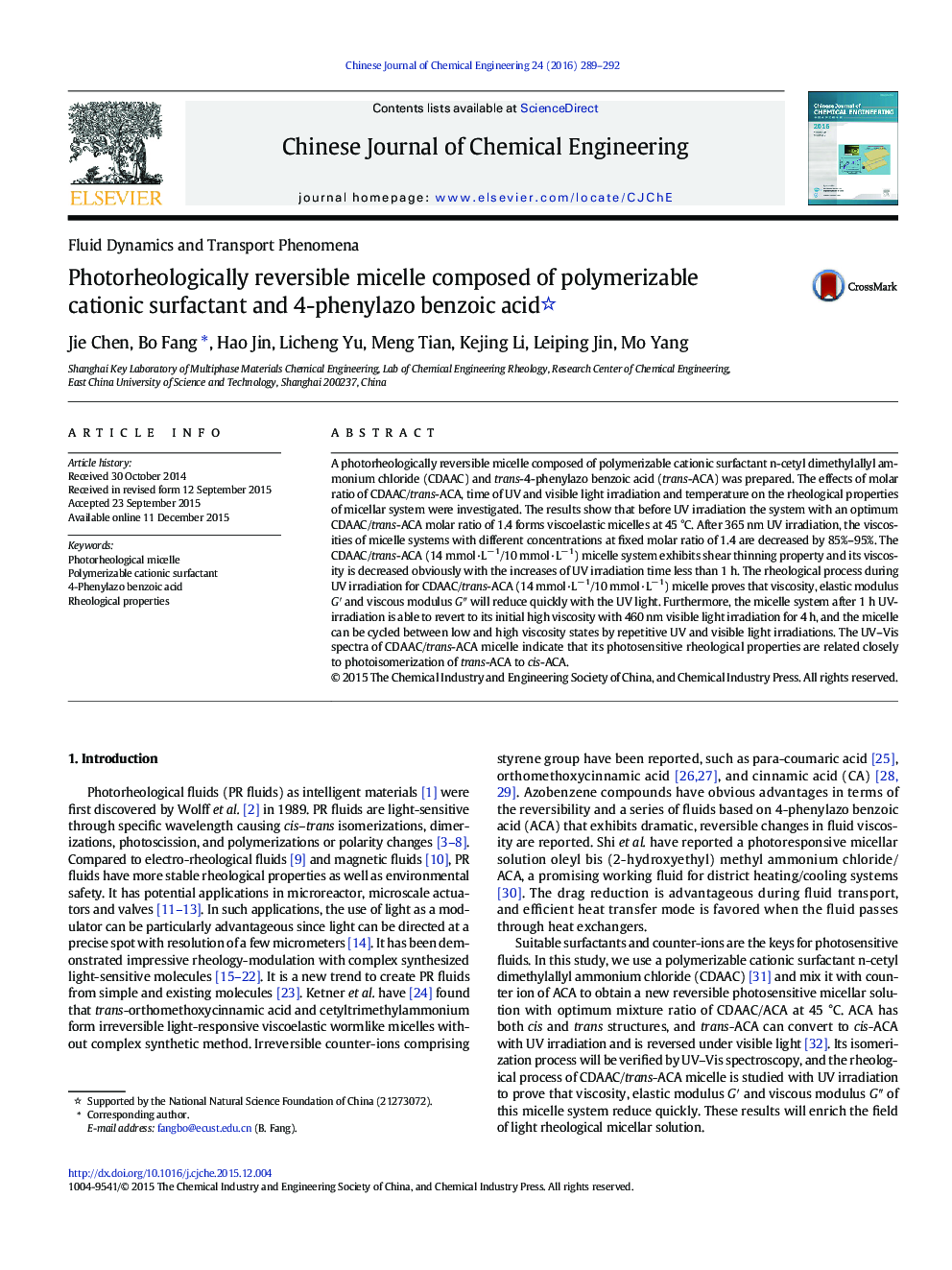| کد مقاله | کد نشریه | سال انتشار | مقاله انگلیسی | نسخه تمام متن |
|---|---|---|---|---|
| 166825 | 1423391 | 2016 | 4 صفحه PDF | دانلود رایگان |
A photorheologically reversible micelle composed of polymerizable cationic surfactant n-cetyl dimethylallyl ammonium chloride (CDAAC) and trans-4-phenylazo benzoic acid (trans-ACA) was prepared. The effects of molar ratio of CDAAC/trans-ACA, time of UV and visible light irradiation and temperature on the rheological properties of micellar system were investigated. The results show that before UV irradiation the system with an optimum CDAAC/trans-ACA molar ratio of 1.4 forms viscoelastic micelles at 45 °C. After 365 nm UV irradiation, the viscosities of micelle systems with different concentrations at fixed molar ratio of 1.4 are decreased by 85%–95%. The CDAAC/trans-ACA (14 mmol·L− 1/10 mmol·L− 1) micelle system exhibits shear thinning property and its viscosity is decreased obviously with the increases of UV irradiation time less than 1 h. The rheological process during UV irradiation for CDAAC/trans-ACA (14 mmol·L− 1/10 mmol·L− 1) micelle proves that viscosity, elastic modulus G′ and viscous modulus G″ will reduce quickly with the UV light. Furthermore, the micelle system after 1 h UV-irradiation is able to revert to its initial high viscosity with 460 nm visible light irradiation for 4 h, and the micelle can be cycled between low and high viscosity states by repetitive UV and visible light irradiations. The UV–Vis spectra of CDAAC/trans-ACA micelle indicate that its photosensitive rheological properties are related closely to photoisomerization of trans-ACA to cis-ACA.
The photosensitivity of CDAAC/trans-ACA (14 mM/10 mM) solution was studied during UV irradiation at 45 °C. Before UV irradiation, the viscosity η of 0.3 ml sample was around 7–8 mPa·s, the viscosity dropped rapidly and significantly to 2.9 mPa·s when the UV light was turned on at t = 100 s, and then the viscosity decreased gradually to 1.8 mPa·s under UV irradiation for next 150 s. This process indicates that CDAAC/trans-ACA solution is sensitive to UV irradiation and will be beneficial to enhance heat transfer and drag reduction.Figure optionsDownload as PowerPoint slide
Journal: Chinese Journal of Chemical Engineering - Volume 24, Issue 2, February 2016, Pages 289–292
